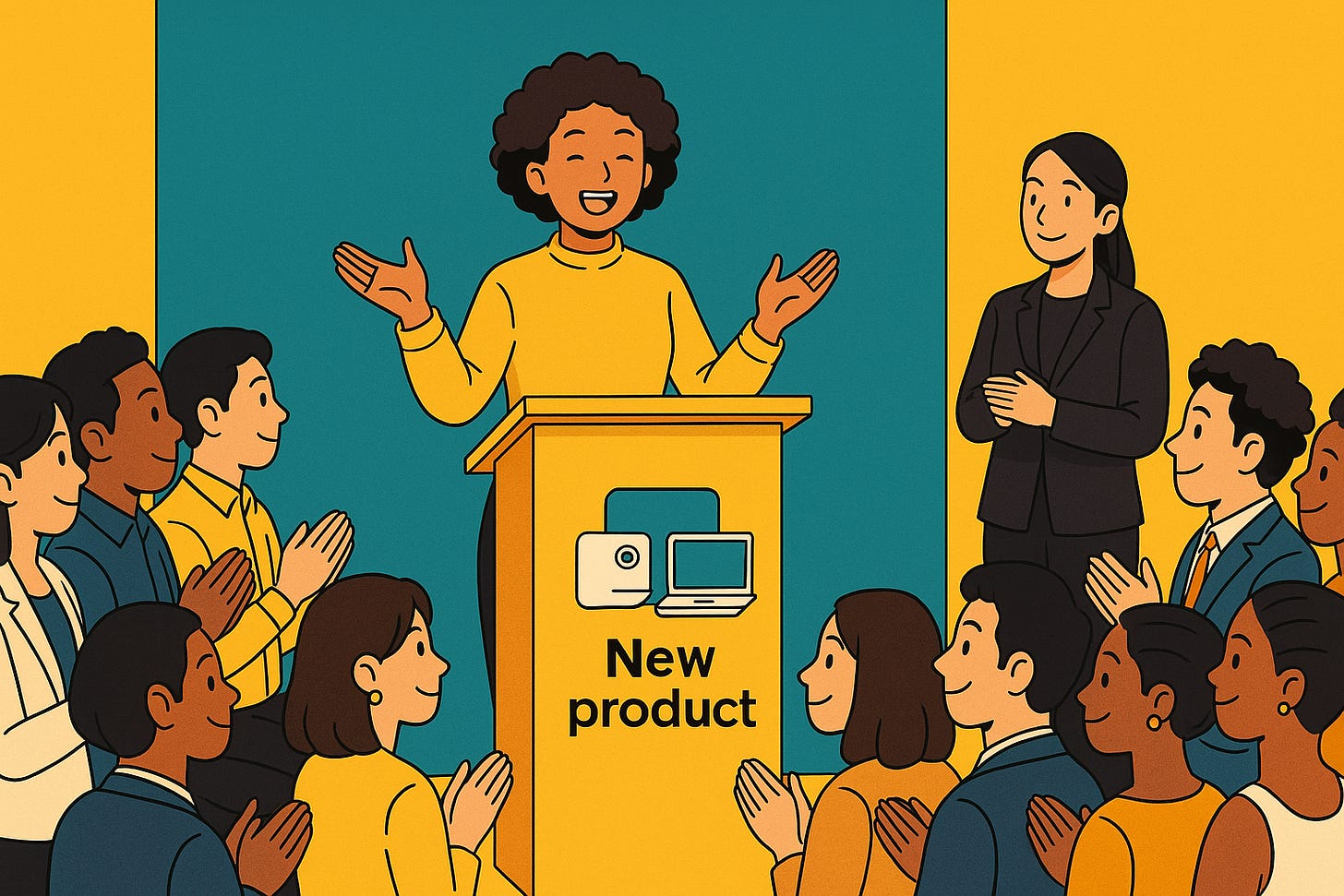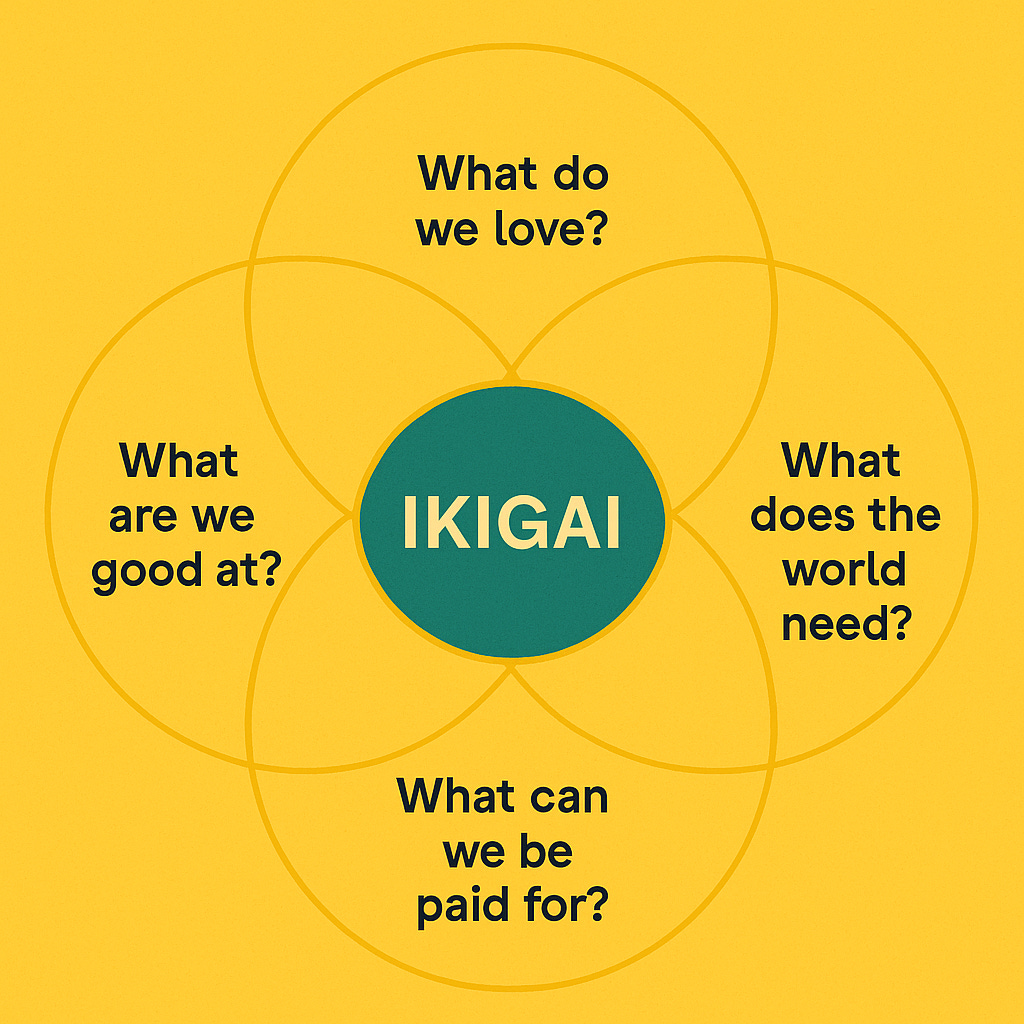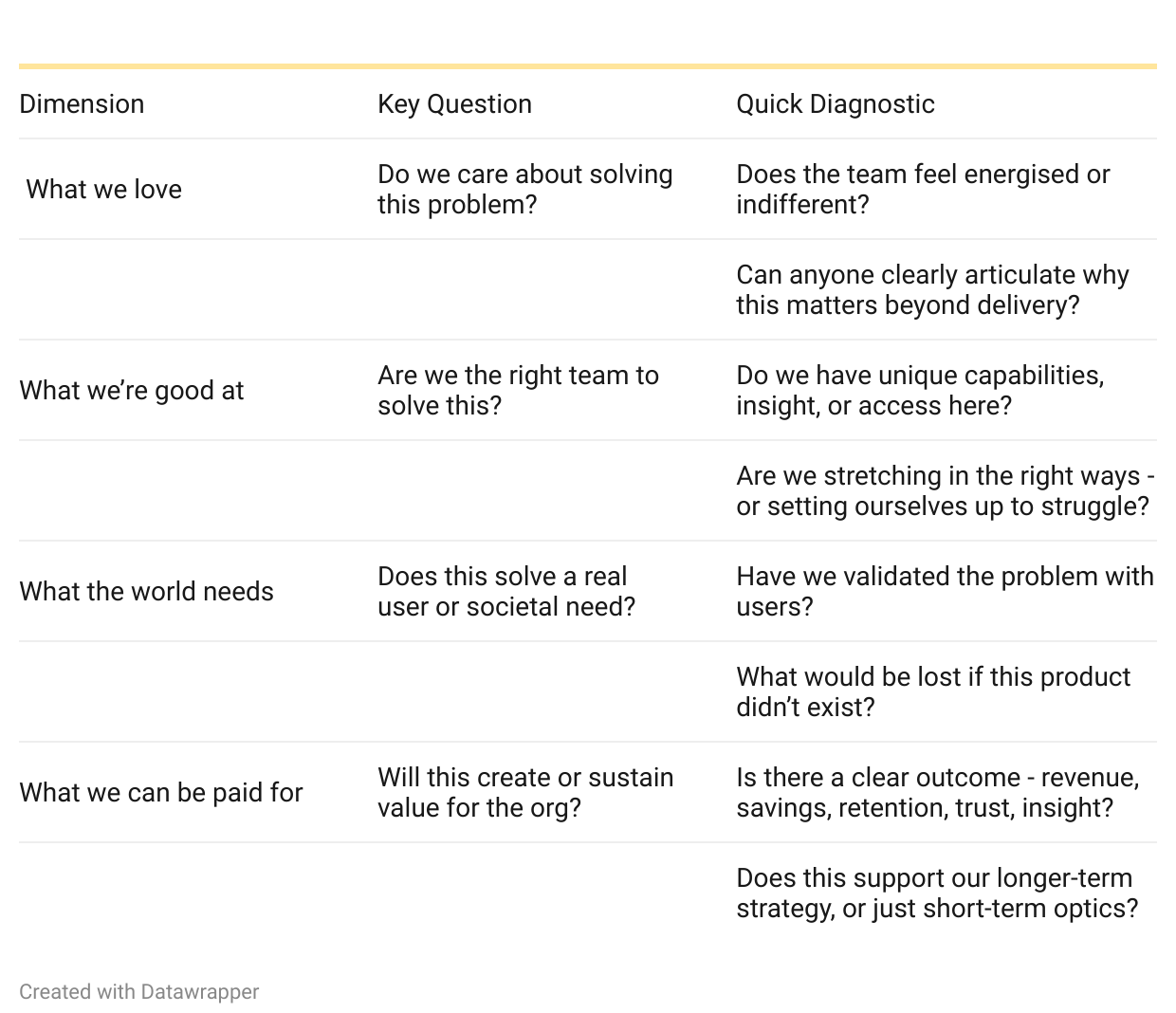Finding Your Product IKIGAI
Designing with Purpose at the Core
Something feels off.
You have hit the delivery milestones. Stakeholders seem happy. Engineers shipped at pace, but when you look at the product roadmap, you can’t shake the feeling that your team have built something that ticks boxes without answering a deeper question: Why does this product deserve to exist?
There was no glaring issue. No scandalous feature nobody asked for. Just… a quiet dissonance. Like we were optimising for all the right things – velocity, consistency, alignment – without anchoring them to a shared sense of purpose. Perhaps, what is missing is pausing to answer a more human question: “What does good look like – not just for the business, but for the people this product will serve?”
A couple of years ago, I bought a book called “Japonisme by Erin Niimi Longhurst” on a whim. A short time later, I joined my company, and a part of onboarding new starts here is to help us think about our purpose. This concept was one I had just been reading about in this book - Ikigai, a Japanese concept that translates roughly to “your reason for being”.
Recently, I’ve been thinking if your product had a soul, how would you go about building it?
What Is Ikigai and Why It Matters for Products
At its core, Ikigai is about purpose. A Japanese philosophy that asks: What makes life worth living? I’ve been exploring how this lens could apply to building products too.
Ikigai sits at the intersection of four questions:
What do you love?
What are you good at?
What does the world need?
What can you be paid for?
When we apply this to product work, those questions become:
Are we solving a problem our customers/teams actually care about?
Do we have the capability to build this well?
Is this something users or society genuinely need?
Can it create or sustain value?
Most product teams focus on the last two – viability and need – especially when you’re working with data infrastructure like I do. However, I believe the best products live at the intersection of all four. That’s what got me thinking about my current product differently. It’s not just about creating new products / features or replacing a legacy product. It’s about helping teams trust their data, reduce loss, and experiment with confidence. That’s something worth caring about. That’s Ikigai.
Reframing Product Discovery Through the Lens of Ikigai
In most product discovery processes, we’re taught to ask three core questions:
Is it desirable?
Is it feasible?
Is it viable?
It’s a useful triad, especially when you’re moving fast and trying to validate a problem space but I’ve found that even when you answer all three, something important can still be missing.
That’s where Ikigai offers something deeper. It introduces a fourth dimension that’s easy to overlook: Do we actually care?
It reframes discovery in a more human and values-led way:
What do we love? Is this a problem our team is genuinely motivated to solve?
What are we good at? Do we have the unique strengths or access to build this well?
What does the world need? Does this respond to a real user or societal tension?
What can we be paid for? Will it create or sustain meaningful value i.e. revenue, savings, insight, trust?
This lens has started to shape how I approach stakeholder alignment too. Instead of jumping straight into scope and timelines, I now ask: Where does this initiative fall short on the Ikigai map and more importantly: What would it take to bring it closer to the centre?
I’ve recently been working on building a new product with clear enough goals: to replace a legacy product, decouple from 3rd party systems, future proof our products, and support a cleaner data architecture. Technically sound. Business-aligned. Emotionally? The room was quiet.
It wasn’t until a discussion with one of our customers that things shifted. They described how painful it was to lose events in the current system. Not just operationally - but emotionally.
“You work so hard to ship something to customers and then the data doesn’t even make it back to you. It’s like shouting into the void.”
That landed. It’s become a rallying cry - not just to replace a product, but to restore trust in our data. Suddenly, the team isn’t just building infrastructure. They are solving a problem they felt and that has changed everything.
Zooming Out: What This Taught Me About My Own Role as a PM
It’s easy to treat product discovery as something you facilitate; a process that helps the team get somewhere but Ikigai made me reflect on something more uncomfortable:
Am I building products that align with my own sense of purpose - or am I just keeping the machine moving?
There have been times in my career when I was running a tight ship, delivering efficiently, and earning great feedback - but quietly feeling disconnected from the work itself. It’s subtle. You don’t burn out. You just start to flatten.
Rediscovering Ikigai helped me ask better questions of myself too. The answers have helped me navigate ambiguity, make bolder trade-offs, and choose initiatives more consciously.
When Products Lose Their Why
One of the quietest crises in product teams today isn’t lack of delivery - it’s lack of purpose.
We move fast. We optimise. We deliver. But sometimes, we forget to ask: Why are we building this in the first place?
When purpose is missing, here’s what shows up:
Roadmaps become bloated. Every request gets a slot because we can’t distinguish what really matters.
Teams burn out or disengage. Engineers become ticket machines. PMs become middle managers.
Products ship, but don’t stick. Without a clear centre of gravity, features land with a thud. No love. No resonance.
Users feel it. Even if they can’t name it, they sense when a product is built to serve the org, not them.
This isn’t just theory. We’ve seen it happen with some of the world’s most recognisable products.
Take Google Glass. It had everything: bleeding-edge tech, massive hype, and the backing of one of the world’s most powerful companies. But it failed - fast and hard. Not because it didn’t work, but because people didn’t want it. There was no real problem it was solving. No social contract with users. Just a powerful solution in search of meaning.
Purpose isn’t fluff. It’s focus. It helps us say no. It gives us a north star when stakeholder priorities clash. It reminds us what success actually looks like.
Because when you ignore purpose long enough, the cost always shows up - just further down the line.
Applying Ikigai as a PM or Team
So how do you bring Ikigai into your product work without turning every roadmap session into a philosophy seminar?
Here’s what’s worked for me:
1. Use Ikigai as a Filter for New Initiatives
Before you commit to building something, run it through the four questions. If it doesn’t sit near the centre, pause. Ask what would need to change to move it closer.
2. Bring the Team into the Why
In early discovery, ask:
What energises you about this problem?
Where do we feel most confident or stretched?
What would make this meaningful work for us - not just functional work?
3. Visualise the Ikigai in Strategy Sessions
Use a simple Venn diagram to map alignment across love, skill, need, and value. It helps make intangible purpose visible - and quickly surfaces misalignment.
4. Check in With Your Own Ikigai
Every so often, ask yourself:
Do I still care about the problem I’m solving?
Am I growing in the areas I want to be good at?
Is this work aligned with the kind of impact I want to have?
Ikigai isn’t a checklist - it’s a compass. The point isn’t to be perfect. It’s to build with intention.
The Product Ikigai Compass
Build Products That Deserve to Exist
Every product manager I know wants to build something that matters but in the noise of delivery, metrics, and stakeholder alignment, it’s easy to lose that thread.
Ikigai helped me reconnect with the parts of product work that are human, not just technical. It’s shaped how I lead discovery, how I think about team motivation, and how I choose what to say yes to.
So here’s my invitation:
If your product feels flat, revisit the why.
If your team is shipping without conviction, surface the purpose.
If your roadmap is full, but your heart isn’t in it - zoom out.
Because when we start with meaning, we build things that matter and when we build things that matter, we create momentum that metrics alone can’t replicate.
Build products that deserve to exist.
What’s your product’s Ikigai? I would love to hear how others are applying purpose in their work.







